If you’ve received a mold report and aren’t sure how to make sense of it, you’re not alone. Mold reports can seem technical, but they provide important information to help you understand the condition of your home or building. In this guide, we’ll walk you through a real-life example from one of our inspections, explaining how to interpret key sections, so you can better understand what your results mean and what to do next.
For a broader introduction to mold reports, check out our previous post, Decode Your Mold Report: Spot Red Flags & Protect Your Home. Today, we’ll dive deeper into the specifics of a real-life case.
1. Basic Inspection Information
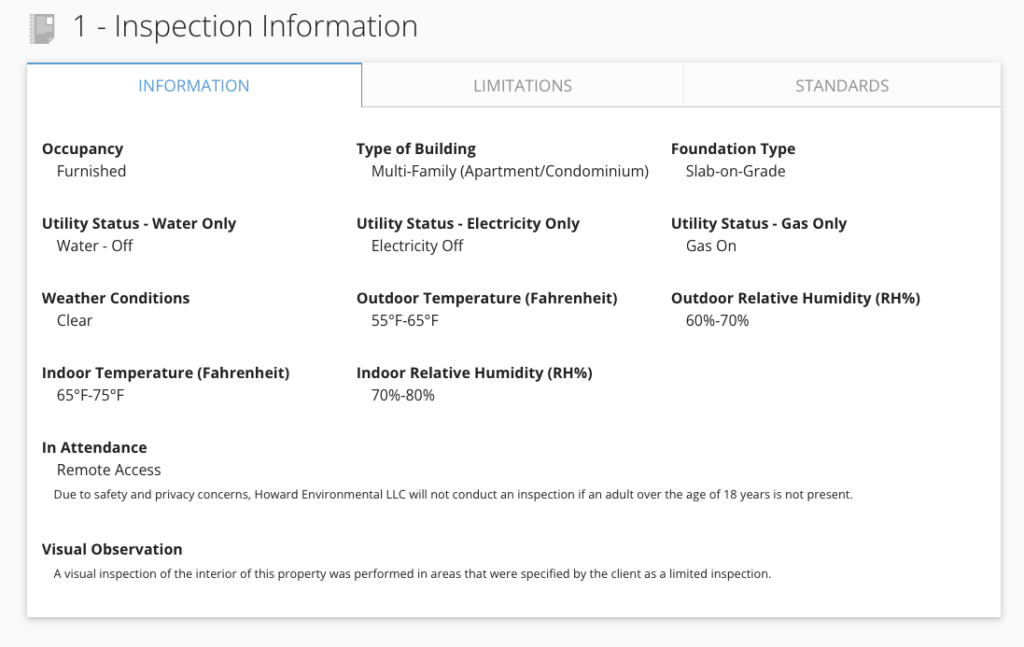
The first part of any mold report provides general details about the building and environmental conditions during the inspection. Here’s what to look for:
- Building Type: In our example, the inspection took place in a multi-family apartment (slab-on-grade foundation).
- Temperature and Humidity: These readings help assess mold risk. The indoor humidity levels were between 70-80%, which is higher than the EPA’s recommended 60%. High humidity can create ideal conditions for mold growth.
2. Visual Inspection Results: What Was Found
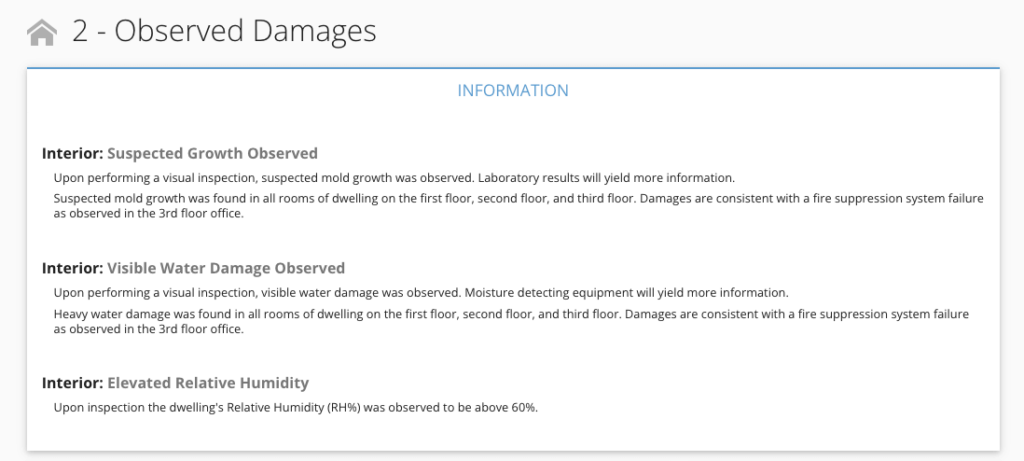
The report’s visual inspection section is where we identify any visible signs of water damage or mold. In our example:
- Suspected Mold Growth: Mold was suspected in all rooms across three floors. Damage was particularly severe in areas affected by a fire suppression system failure.
- Water Damage: Heavy water damage was found throughout the building, especially on the third floor. Elevated moisture readings confirmed that materials were saturated.

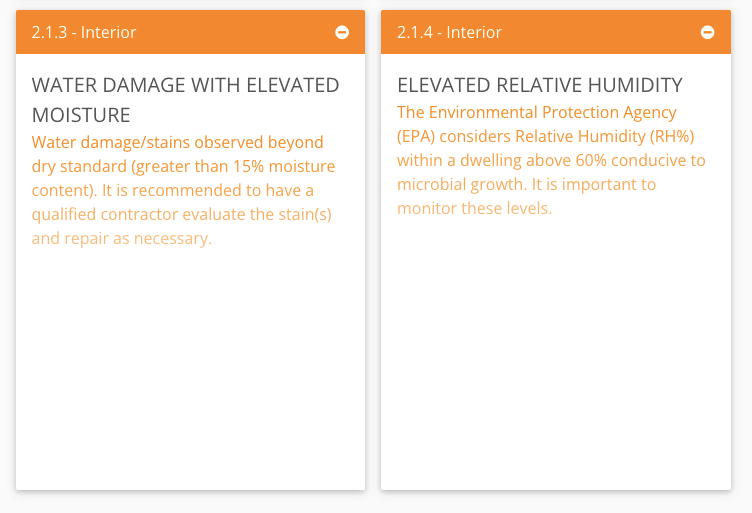
Key Takeaway: When visible damage or suspected mold is noted, it means further investigation (such as lab testing) is needed to confirm the extent of contamination.
3. Laboratory Results: Spore Counts and Mold Types
Lab results are often the most technical part of a mold report, but don’t worry—we’ll break it down.
- Air Sampling Results: In this case, air samples showed extremely elevated fungal contamination—over 2500 times higher than outdoor samples. This indicates a hazardous environment that requires immediate action.
- Surface Sampling Results: Surface samples detected several types of mold, including Stachybotrys (commonly known as black mold), Aspergillus, and Chaetomium. These molds can be harmful, especially to individuals with respiratory issues.
Key Takeaway: Elevated spore counts or the presence of harmful mold species like Stachybotrys mean professional mold remediation is necessary.
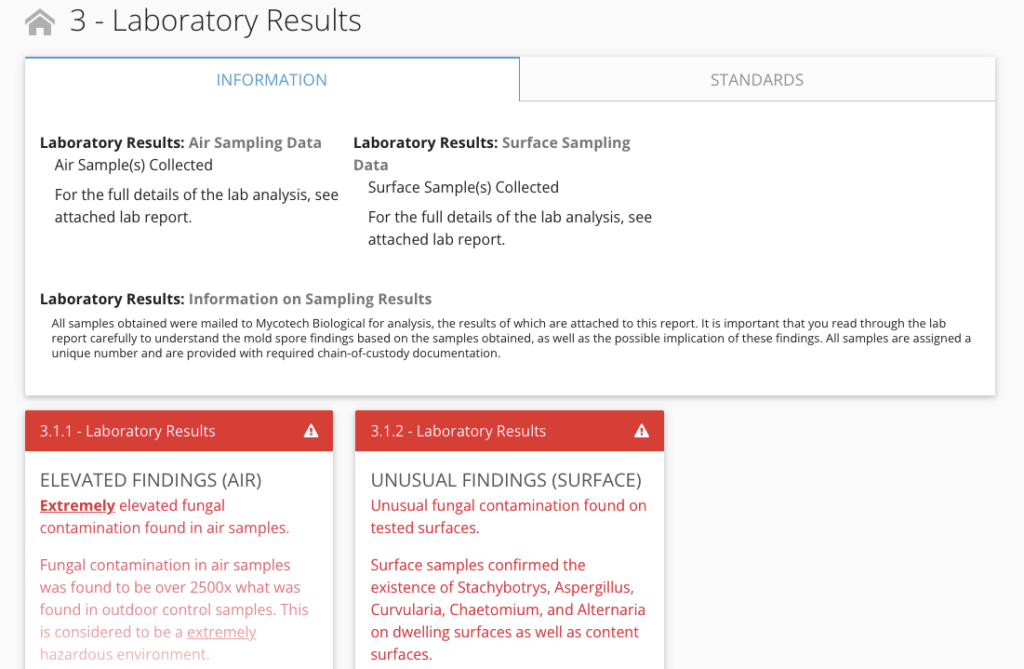
4. What Do Elevated Spore Counts Mean?
Elevated spore counts, like those found in this report, indicate a higher level of mold spores in the air compared to outdoor levels. This is usually a sign of an active mold issue within the home. In this case, the spore count was dangerously high, so immediate remediation was recommended.
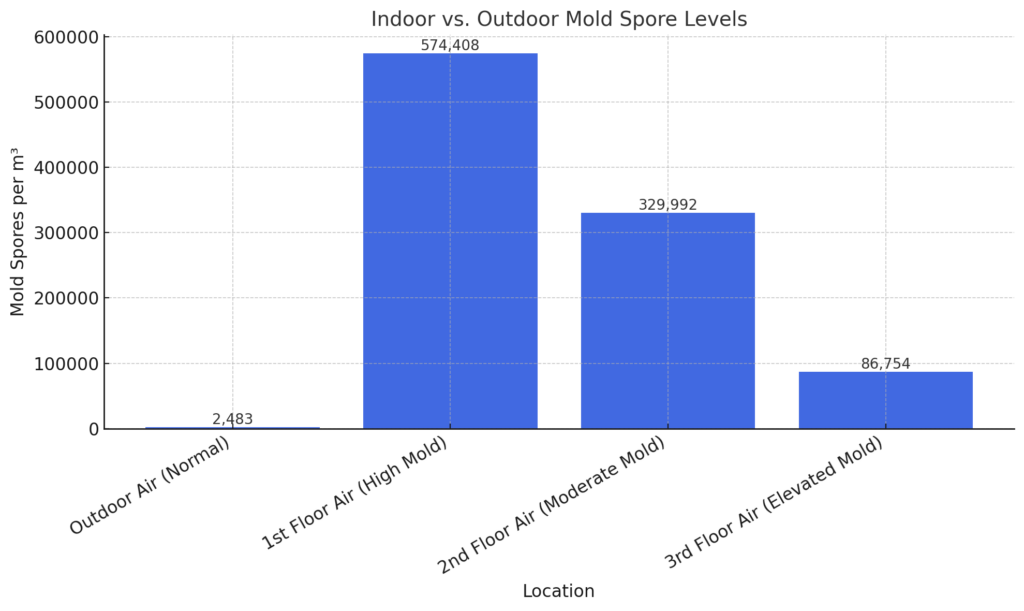
5. Key Recommendations
The final section of your mold report often includes professional recommendations based on the findings. For this example:
- Remediation Needed: Since over 100 square feet of mold-affected area was detected, a licensed mold remediation contractor is required to handle the cleanup.
- Humidity Control: The relative humidity inside the home exceeded safe levels, so it’s important to address this by improving ventilation or using dehumidifiers to prevent future mold growth.
Key Takeaway: Follow your report’s recommendations closely. Mold remediation should always be handled by professionals if significant contamination is found.
Final Thoughts: Why Understanding Your Mold Report is Critical
Your mold report isn’t just a set of numbers—it’s a roadmap to the health and safety of your home. Elevated spore counts, like the ones found in this inspection, indicate more than just an inconvenience. They signal potential hazards that could impact your family’s wellbeing, especially when harmful mold species like Stachybotrys and Aspergillus are present.
When mold is detected at such elevated levels, immediate action is required. Ignoring it could lead to worsening health problems, costly structural damage, and a longer recovery process. By understanding the specific mold types, spore counts, and areas of contamination, you’re empowered to take the right steps—whether it’s improving ventilation, controlling humidity, or calling in a professional for remediation.
Key Takeaway: A mold report isn’t something to be overlooked. If your spore counts are as high as the ones we’ve outlined, professional intervention is not just recommended—it’s necessary. Addressing mold promptly protects your home, your health, and your peace of mind. Let us at Howard Environmental guide you through the process and ensure your home is safe from harmful mold.
If you have any questions or need assistance interpreting your report, don’t hesitate to reach out to us. Your safety is our priority.
FAQ
How do you read mold test results?
Knowing how to read mold reports and test results might seem tricky at first, but it’s pretty straightforward once you know what to look for. Start by checking the spore counts—this tells you how many mold spores were found in the air or on surfaces. Then, look at the types of mold listed in the report. Some, like Stachybotrys (black mold) or Aspergillus, can be harmful, while others are more common and less concerning. Make sure to compare indoor spore levels to outdoor levels—if your indoor numbers are much higher, it’s a sign there might be mold growth inside. And don’t forget to take note of any mentions of high humidity or water damage, as mold thrives in damp spaces. Read more at How to Read a Mold Report website.
What is a normal mold report?
A normal mold report will typically show low spore counts inside your home, and those numbers should be pretty similar to what’s found outdoors. It’s normal to see common molds like Cladosporium or Aspergillus in small amounts, as they’re usually harmless in low concentrations. If the report shows elevated levels of mold, especially harmful types like black mold, that’s when you’ll want to take action. But generally, if mold is present at low levels and there’s no active growth, you’re in the clear!
What is an acceptable mold count?
There’s no magic number for what’s “acceptable,” since it depends on the type of mold and the environment. No EPA or other federal limits have been set for mold or mold spores.
However, a good rule of thumb is that indoor spore counts should be about the same or lower than outdoor counts. For example, if the outdoor spore count is around 2,000 particles/m³, you don’t want your indoor levels to be much higher than that. If your numbers are in the thousands or higher, and especially if harmful molds are present, it’s time to call in a professional.
What is considered bad mold?
Not all mold is dangerous, but some types are more harmful than others. Black mold (Stachybotrys) is one of the worst offenders because it can produce toxins that affect your health. Other concerning molds include Aspergillus, Chaetomium, and Penicillium. These types of mold can trigger respiratory issues, allergies, and more serious health problems, especially in sensitive individuals. If your report shows high levels of any of these molds, it’s a sign you need to deal with the problem right away.

